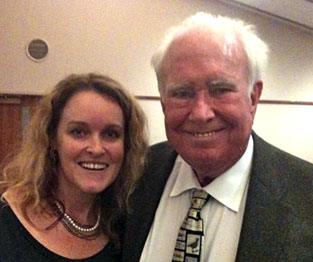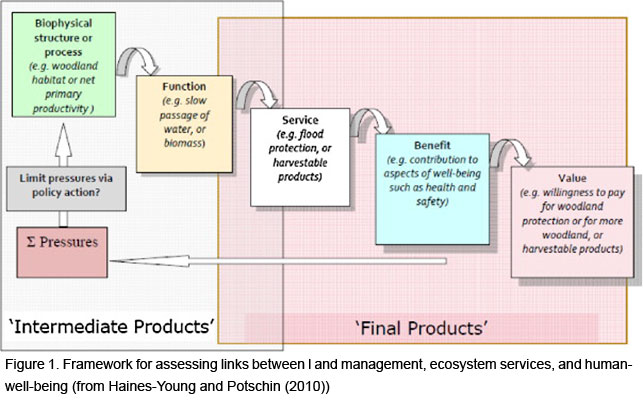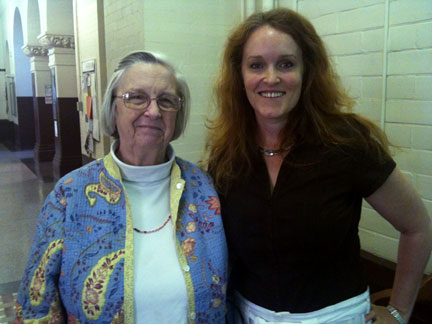
Sedra Stephanie-Lee Shapiro

Sedra Stephanie-Lee Shapiro
Doctoral Student · Environment and Resources
Contact Information
Office: 608-265-7876
Email: ssshapiro@wisc.edu
Office: 115b Science Hall
Address
University of Wisconsin – Madison
Gaylord Nelson Institute of Environmental Studies
550 North Park Street
122 Science Hall
Madison, WI 53706-1491
Research Interests
My research interests are highly interdisciplinary and link conservation biology, marketing and consumer science and psychology to explore conservation behavioral economics. I'm attempting to understand motivations for conservation and human behavior in light of market based political economies. Further I am motivated to understand how to incentivize better conservation and sustainable choices. My doctoral work is empirically investigating ecolabels as a market tool to support ecosystem payment schemes in agricultural landscapes and to motivate consumer decision processes to positively influence consumption patterns.
Key words:
Conservation of biodiversity, markets tools as environmental regulation, payment for ecosystem services, working landscapes, consumer behavior, sustainability, conservation behavioral economics
After a successful career in environmental non-profit, philanthropic and higher education work, I have returned to university to pursue my PhD integrating my interests in business, science and conservation. I am motivated in part due to my experiences watching how people make decisions, particularly in the realm of conservation and large stakeholder collaborative initiatives, and how these behaviors impact conservation of biodiversity.
My research is in conservation of biodiversity and how market tools, such as ecolabels, can be used to motivate consumer decision processes to positively influence consumption patterns. This relationship linking the natural world with the human world has become increasingly interesting to researchers and covers domain areas such as social-ecological systems (SES) and ecosystem services studies. The Millennium Ecosystem Assessment (MEA) provides a synthesis of the science showing the connection between our well-being and the well-being of the planet while Haines-Young (2009) provide an elegant model depicting the relationship between the physical environment and our human concept of ecosystem value (figure 1).

Research Issue I Address
The research problem my dissertation addresses is the need to broaden and strengthen our approach for conserving biodiversity. Conservation has traditional prioritized areas to protect based on biophysical elements. More recently an “ecosystem service” framework has provided a logic for conservation activities. This logic incorporates services to humanity and economic values. I believe, however, human behavior should be the focus with economic rewards considered one of many possible motivators for pro-environmental behavior. Explicitly incorporating behavior change in conservation strategy can strengthen conservation of biodiversity. Ecological and economic models are good beginning points, but neglect a central source of conflict: differing human choice and behavior that are the source of over-consumption and unsustainable choices. The main driving forces behind pro-environmental behavior include variables such as attitudes, social norms, external influences (such as incentives or restrictions), and personal values.
Food As A Lens to View Problem
I am using food as the lens to approach this issue. Food provides an important connection in two ways: 1) agriculture is the largest use of land and habitat loss and destruction is considered a leading threat to biodiversity and, 2) everyone eats and cares about food. Food provides a solid vehicle to engage the disinterested.
Croplands and pastures are the largest terrestrial biome occupying 38% of Earth's land surface (USDA/National Agricultural Statistics Service 2007; Ellis et al., 2010; Foley et al., 2011). Furthermore 37% of remaining land is embedded within a mosaic of agricultural and settled land use (USDA/National Agricultural Statistics Service 2007). Conservation of native ecosystems and the fate of biodiversity is inextricably linked to agricultural practices and land use (Haines-Young, 2009). In essence food links every individual with the natural world on multiple dimensions.
Research Problem
There is hope that eco-labels will assist in the financing and promotion of the practices necessary for biodiversity conservation in working landscapes. To make this happen, it will be necessary for the promoters of eco-labels to improve their knowledge of what motivates consumers. My specific research will focus on the question of eco-label efficacy as a market-based mechanism to promote conservation and ecologically sensitive farming using the Wisconsin Healthy Grown® Potato brand as my model system. My research will first explore cognitive and behavior psychology theories to clarify the theoretical foundations for empirical research in order to identify variables and leverage points for conservation strategies based on eco-labels. Guided by these theoretical foundations, my empirical research will focus on the Healthy Grown potato eco-label and establishing how to improve the benefit of this brand for consumers and producers, using more standard marketing and consumer science methods based on consumer surveys and discrete choice experiments.
Research Question & Methods

My approach is to empirically evaluate these issues by looking at the efficacy of the Healthy Grown Eco-Potato label and establishing how to improve the benefit of this brand for consumers and producers. The conservation challenge is ultimately a collective-action problem that relies on individual behavior (Ostrom, 2010) – see photo of me with the La Grande Dame of SES research! My practical goal is to use conventional marketing tools to increase the efficacy of the Healthy Grown label. My larger goal is to use Healthy Grown as an empirical study to improve understanding of the efficacy of eco-labels in general. My dissertation investigates methods to increase support for sustainability and biodiversity conservation among a largely disinterested consuming public. My primary empirical focus is on general consumer research for the Healthy Grown eco-labeled potato. The potato is an interesting case study, as it is not a food product that garners much consumer involvement like wine, chocolate, or personal care, and so should be a true litmus test for the power of shopping to conservation (a method of payment for ecosystem services).
My consumer empirical research uses an on-line questionnaire that employs several survey instruments. I include an experimental discrete choice preference test along with several psychographic tests. The general consumer survey is fielded through Research Now. The survey instrument is developed using both Qualtrics software and Sawtooth software.
The bulk of my empirical work will address the question of how eco-labels can and cannot assist in the financing and promotion of the practices necessary for biodiversity conservation in working landscapes. Knowing that information is regarded as a relatively poor predictor for personal decision processes and behavior change, it seems even more important to identify the variables and the relative impact of those variables (or the importance of those unknown variables) for different consumer segments. This information can and should be used to aid in conservation strategy – that is to understand individual action that benefit a collective good so that effective intervention strategies can be devised.
I will also relate the perceived benefit for consumers to the perceived benefit for producers. To do this I will also conduct surveys of participating growers in collaboration with my Lab-mate Alison Duff.
Finally the culmination of this work will be the development of a theoretical model that identifies a theory of action showing how eco-labels can and should function if they are to be used in conservation strategy.
Publications & Presentations
John Porter, Peter Arzberger, Hans-Werner Braun, Pablo Bryant, Stuart Gage, Todd Hansen, Paul Hanson, Chau-Chin Lin, Fang-Pang Lin, Timothy Kratz, William Michener, Sedra Shapiro, and Thomas Williams. 2005. Wireless Sensor Networks for Ecology. BioScience 55(7):561-572.
Luke, C., P. H. Zedler, And S. Shapiro. 2004. Fire management along the wildland-urban interface in southern California: A search for solutions at the Santa Margarita Ecological Reserve. Proceedings of the 22nd Tall Timbers Fire Ecology Conference (2001).
Janet Ebaugh, William Michener, Sedra Shapiro, Mark Stromberg. 2001. Section III: Programs. In S. Lohr (Ed.), An Operations Manual for Field Stations and Marine Laboratories. Organization of Biological Field Stations (OBFS).
Conference and Talks
Shapiro, Sedra (2011, December). The Mechanics of Eco-Labeling: Who decides what's green? Environment on Tap, Nelson Institute for Environmental Studies, Madison Wi.
Shapiro, Sedra, Anna R. McAlister, and Paul Zedler (2012, May). Competitive Success of Ecolabels for Healthy Landscapes, Healthy Food, and Healthy People. Agricultural and Applied Economics Association Conference, Boston, MA.
Popular Media
WORT - Madison's Community Sponsored Radio Station Interview (September 5, 2012)
Interviewed as topic expert regarding controversial meta-analysis by Stanford researchers published in Annals of Internal Medicine
Study Title: "Are Organic Foods Safer or Healthier Than Conventional Alternatives? A Systematic Review"
Annals of Internal Medicine, 157: 348-366.
Authors: Smith-Spangler, C., Brandeau, M. L., Hunter, G. E., Bavinger, J. C., Pearson, M., Eschbach, P. J., Sundaram, V., Liu, H., Schirmer, P., Stave, C., Olkin, I. & Bravata, D. M. 2012.
View Sedra's CV (PDF).